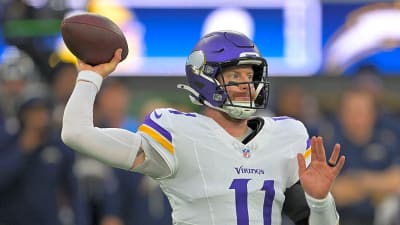
For the first time since the 2016 season, the Huskers finish October knowing they’re headed to a bowl game.
Like in every other Big Ten game this season, the path to this win wasn’t pretty. Several Huskers made costly mistakes. A bad call almost mentally derailed the team enough to lose the game. As was the case in some of their other wins, some special plays by the special teams and a decisive drive by Dylan Raiola to close out the game gave Nebraska another close victory.
The game unfolded as I predicted in my preview, even if it had some twists and turns along the way, partly due to help from the officials. I believed Nebraska needed to get out to an early lead and play from ahead. While they never trailed, Northwestern had chances to take the lead if they could score a touchdown or a field goal during a drive. Luckily, the Blackshirts stepped up to force a red zone field goal late in the first half, maintaining a one-point lead at halftime. Northwestern also had a short field to take the lead in the fourth quarter after a Dylan Raiola interception. Javin Wright returned the favor a few plays later.
Nebraska forced Preston Stone to throw, and that won Nebraska the game. I thought if he threw at least 25 times, he’d have two interceptions, and Nebraska managed to get two picks. This was the second-highest pass attempt rate Northwestern had in a game this season (Tulane being first). The Huskers turned both turnovers into touchdowns.
There are two key stats that usually show whether Nebraska won the game: average starting field position and the net success rate*. In fact, Nebraska is 6-0 in games where it has a shorter field than its opponents, and 0-2 when it provides its opponents the advantage. While Kenneth Williams stole the show with his touchdown, his 30-yard return was also vital in giving Nebraska a field goal opportunity. Archie Wilson’s two punts each traveled over 50 yards, forcing the Wildcats into long fields if they wanted to score. Mike Ekeler has been Nebraska's star in 2025.
*Net success rate is the Huskers’ success rate on offense minus their opponent’s success rate on offense.
While the success rate hasn’t predicted Nebraska’s wins as effectively as net field position (Cincinnati had a higher success rate than Nebraska in the opener, while Nebraska was successful more often than Michigan), it’s also been a key indicator of the Huskers’ wins. The Huskers rank in the bottom third of college football teams in explosive play rate, so they need to compensate by chaining together shorter, successful plays. This was the Huskers’ best net success rate against a power conference opponent in 2025, and the third-best net success rate against a power conference opponent in the Rhule era.
This was an important win for the Huskers, securing their sixth victory of the season and bowl eligibility. As Matt Rhule and the players emphasized, the goal for the season has shifted beyond just six wins. Nebraska heads into November with four games against tough opponents. Both a 4-0 and a 0-4 record are still possible, along with any outcome in between. Nebraska is a good but flawed team. The progress Nebraska has shown late in games and on special teams is why they are sitting at 6-2 instead of 4-4 right now.
Progress has been made in 2025. Now, the Huskers have five more games to show the world how much progress they have made.
More must-reads:
- Florida State considering drastic change to Mike Norvell decision
- North Carolina is set to make decision on potentially firing Bill Belichick
- The 'Active NFL receptions leaders' quiz
Breaking News
Trending News
Customize Your Newsletter
 +
+
Get the latest news and rumors, customized to your favorite sports and teams. Emailed daily. Always free!








